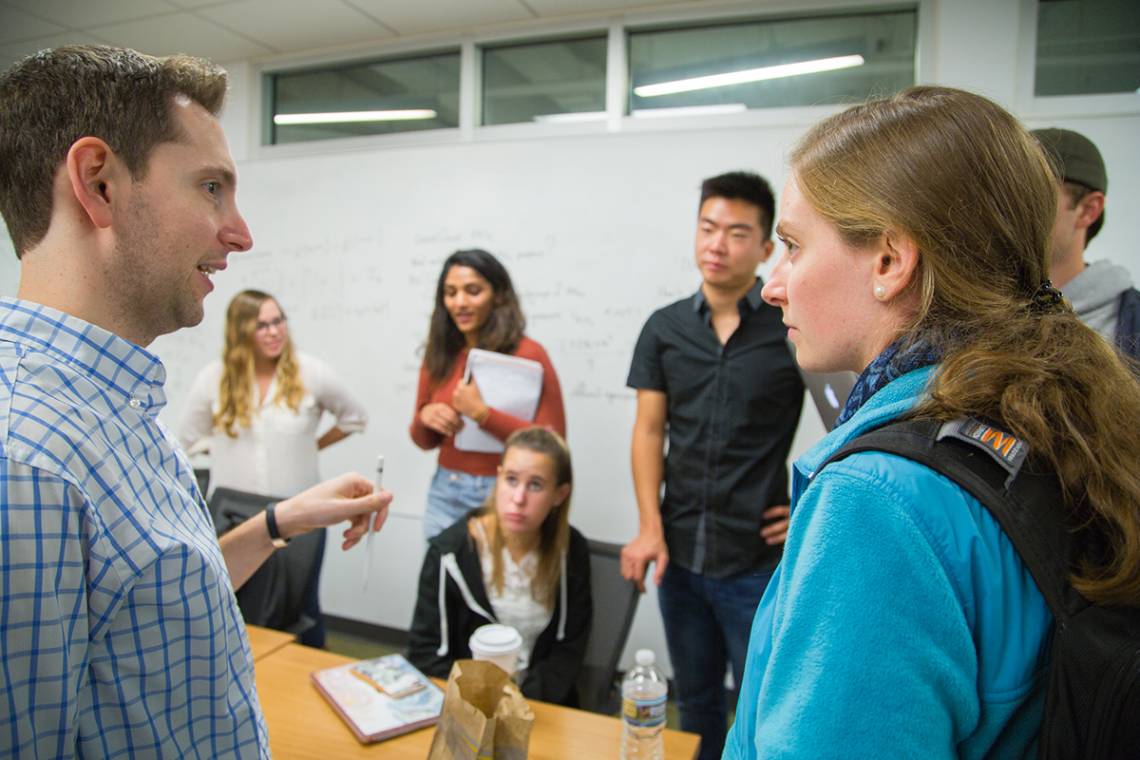Students Explore Humanities Through Culture, Community & Commerce Pathway

OSPRI: Open-Source Education Technology (I&E 390)
How can open-source technology improve education?
It’s a question undergoing consideration in Aria Chernik’s Open Source Education Technology course, which pairs a theoretical underpinning about the state of education and open-source technology with hands-on experimentation.
In the course, students were asked to identify problems with the current education technology space at Duke.
Then, they were told to solve those problems.
Students formed teams that worked on a different education technology product using open source.
“The classroom has really functioned as a mini R&D lab,” Chernik said. “The students have gone through all the design stages, from prototyping to a finished product at the end of the semester.”
 Because the course has multiple applications, it counts toward three pathways within the I&E Certificate: Culture, Community & Commerce, Technology & Design and Social Innovation & Policy. The course, which draws both Duke I&E students as well as students from other parts of the university, is part of OSPRI, or Open Source Pedagogy, Research + Innovation.
Because the course has multiple applications, it counts toward three pathways within the I&E Certificate: Culture, Community & Commerce, Technology & Design and Social Innovation & Policy. The course, which draws both Duke I&E students as well as students from other parts of the university, is part of OSPRI, or Open Source Pedagogy, Research + Innovation.
OSPRI’s mission is to explore the intersection of open source and education innovation.
Jihanne Bettahi and Sharon Peng, two seniors who recently took the course, teamed up to solve a personalization problem they saw within education.
“Learning is accessible, but not personalized,” Bettahi said, explaining that when people do a Google search for something they want to learn about, they all receive the same information, regardless of their background knowledge or goals in learning about the topic. “But personalized learning is more effective.”
The pair hoped to create a product that uses machine learning to create a personalized content curriculum that provides users with their own scheduling and goal-setting.
Bettahi chose to take this course because she’s an education minor.
“I was interested to see how artificial intelligence and other technology could intersect with education to enhance learning and make an impact,” she said. “This course is a great way to incorporate my interests with my studies.”
Building Global Audiences (I&E 250)
On the first day of class last semester, students in Aaron Dinin’s Building Global Audiences classes watched Taylor Swift’s most recent viral music video.
Since then, they’ve had a lot of discussion about how to build a global audience, a skill that takes knowing both your audience and your competitors.
 The class partnered with the John Hope Franklin Humanities Institute to build audiences for three FHI projects: the Health Humanities Lab, Humanities Futures and the FHI YouTube channel.
The class partnered with the John Hope Franklin Humanities Institute to build audiences for three FHI projects: the Health Humanities Lab, Humanities Futures and the FHI YouTube channel.
Clara Forrestal, a senior computer science major, was on the Humanities Futures team last semester. She said that after talking to the people who manage the Humanities Futures site to determine their goals, her team spent time brainstorming about potential audiences for the site.
The team also spent time digging into the site’s analytics and looking at competing sites. They developed a strategy for posting content to the three social media platforms Humanities Futures is currently on – Facebook, Twitter and Instagram. They also discussed expanding to other platforms to reach the more scholarly audience who would be interested in Humanities Futures’ work.
Forrestal said she wants to work as a front-end developer and has applied frameworks she has learned in this course to think about how she can make software that will appeal to a wide audience.
Sruthi Mandalap, a graduate student in engineering management, said she too has applied course lessons to her work. She said understanding the audience’s perspective will help her be a better engineer who is more customer-facing.